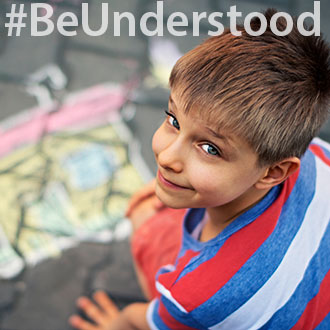Dictation is an assistive technology (AT) tool that can help kids who struggle with writing. You may hear it referred to as “speech-to-text,” “voice-to-text,” “voice recognition” or “speech recognition” technology. Kids can use dictation to write with their voices, instead of writing by hand or with a keyboard. This can be helpful for kids with dysgraphia, dyslexia and other learning and attention issues that impact writing .
Read more about what dictation technology is and where to find it.
Types of dictation technology
Kids learn in different ways and at different paces.
It’s important to teach to each student’s individual strengths, skills and needs. This is true for all kids — not just kids with learning and attention issues.
7 Things to Know About the 1 in 5 with Learning and Attention Issues
Dictation technology converts spoken words into digital text on a screen. With dictation, kids can write words by speaking them aloud. Kids can use dictation not only to write, but also to edit and revise their writing — all by using their voice.
There are several types of dictation technology kids can use.
- Built-in dictation technology: Today, many devices have built-in dictation tools . This includes desktop and laptop computers (Windows and macOS), smartphone and digital tablets (Android and iOS), and Chromebooks (Chrome OS). If you have any of these devices, you probably don’t need to buy special software. The microphone and the dictation tools come with the device, but you may need an Internet connection.
- Dictation apps: Along with using built-in dictation tools, your child can also download dictation apps on smartphones and digital tablets. One example is Dragon Dictation (iOS).
- Chrome tools: A number of tools for Chromebooks and the Chrome browser also offer dictation, like Co:Writer Universal, WordQ and Read&Write for Google Chrome. When used in the Chrome browser, Google Docs also has its own dictation tool called Voice Typing.
- Dictation software programs: The most full-featured dictation technology is found in software programs for desktop and laptop computers. These programs can adapt to how a child speaks, which makes them more accurate the more a child uses them. Some dictation programs can also convert audio recordings into digital text. Examples of dictation software include Dragon for PC, Dragon for Mac and WordQ+SpeakQ.
How dictation technology can help with writing
Kids with writing issues can have a hard time with assignments like essays and papers, and even writing emails. Dictation technology can help in several ways. By using dictation technology:
- Kids with motor skills issues can write more comfortably and accurately. This includes kids who have trouble typing on a keyboard.
- Kids with poor handwriting can use dictation to create text that’s easier for others to read.
- Kids who struggle with spelling can say a word or sound it out, and then see how it’s spelled on-screen.
- Kids who think faster than they can write by hand or type on a keyboard can more easily get all their thoughts into words.
What to know about using dictation technology properly
Dictation technology is a powerful tool, but using it properly is a skill. There are commands kids have to learn. And some aspects of dictation can be difficult for kids with certain learning and attention issues.
Here’s what you need to know:
- When dictating their writing, kids need to speak clearly and pronounce words correctly. If kids mumble or mispronounce words, the dictated text might not be correct. This may be hard for kids who struggle with spoken language .
- While dictating text, kids don’t only have to say the words they want to write. They have to say the punctuation, too. For example, they may need to say “period” or “question mark” at the end of a sentence.
- In general, dictation is more accurate if kids say whole phrases and sentences, not just individual words. While kids who have slow processing speed or struggle with working memory may benefit from dictation in other ways, they may have trouble saying large groups of words at a time.
- Editing or navigating a document with dictation can be challenging. Kids have to learn how to use special verbal commands. For example, to delete the previous sentence, a child might have to say “select previous” and “delete that.” To navigate a document, a child might have to say “move backwards 10 words” to move the cursor, or “new paragraph” to start a new paragraph.
- Many teachers recommend that kids start with an outline before writing a paper with dictation. That’s because when kids dictate, they can sometimes lose focus on what they’re writing about. An outline helps kids stay organized.
- Kids can use dictation in combination with keyboarding. For instance, some kids find it easier to write a first draft with dictation, but then use a keyboard and mouse for editing and moving around in a document.
It’s important to keep in mind that dictation technology isn’t perfect. It may not always be accurate when putting what your child says into text. And as with all AT tools, dictation may not help every child with writing issues. Some kids may do better with other types of accommodations for writing , like a scribe to write down what they’re saying. Others may prefer physical tools to support their writing .
Your child may also prefer another assistive technology for writing, like word prediction or graphic organizers.
Key takeaways
- Dictation technology can be a great tool for kids who struggle with handwriting or spelling, and for kids who think faster than they can write.
- For dictation technology to work properly, kids have to speak clearly and use various commands.
- Several types of dictation tools are available on computers, mobile devices and Chrome devices..
This article originally appeared on Understood.org , a free online resource for parents of children with learning and attention issues. Reprinted courtesy of Understood.org © 2018 Understood, LLC. All rights reserved.


